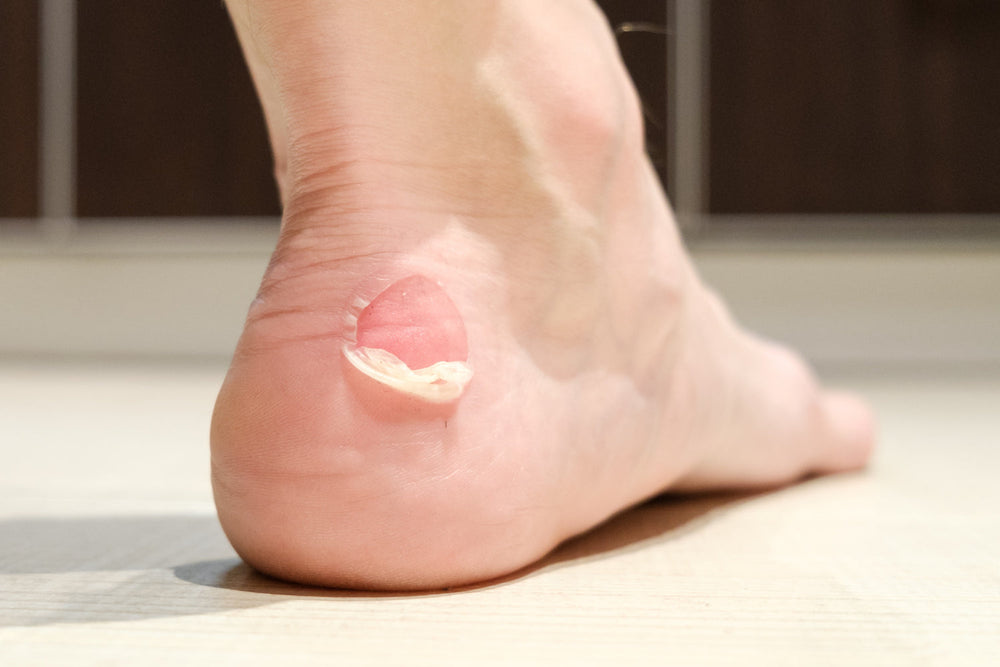Dealing with Blisters from Running Shoes

Blisters can be a pesky issue for runners, causing discomfort and sometimes hindering performance. These small pockets of fluid can form on your feet due to a variety of reasons, often tied to your choice of footwear. Understanding why blisters happen is a key step in both preventing and dealing with them effectively.
When it comes to running, blisters are usually the result of friction, moisture, or poor-fitting shoes. The constant rubbing against the skin, especially during long runs, can lead to these painful sores. By examining the common causes, you can start to find practical solutions to keep your feet pain-free.
Prevention is always better than cure, and there are simple steps you can take to minimise your risk of developing blisters. From selecting the right socks to ensuring your shoes fit properly, a few adjustments can greatly enhance your running comfort. With some basic tweaks to your routine, you can enjoy your runs without the annoyance of blisters.
Understanding Blisters and Their Causes
Blisters are small pockets of fluid that form between the layers of skin, usually as a protective response to friction or pressure. For runners, these occur most commonly on the feet where there is continuous rubbing against shoes. The fluid serves as a cushion, but it can be quite painful, impacting your ability to run comfortably.
The main causes of blisters in runners often revolve around ill-fitting shoes that cause excessive movement or pressure points on the foot. Running shoes that are too tight can squeeze the foot, while those that are too loose may allow too much movement, leading to increased friction. Furthermore, poorly designed shoes with inadequate padding or arch support can create specific areas of stress, adding to the risk.
Apart from shoe fit, other factors like moisture also significantly contribute to blister formation. When your feet sweat, and the skin remains damp, it becomes softer and more vulnerable to friction. This is why proper shoe material and sock choice play a crucial role in keeping your feet dry and protected against blisters. Recognising these causes helps you take effective steps towards prevention.
Preventative Steps to Avoid Blisters
Preventing blisters starts with choosing the right shoe size and ensuring a proper fit. When selecting running shoes, try them on at the end of the day when your feet are slightly swollen. This ensures a fit that accommodates foot expansion during runs. Look for shoes with ample toe room and good arch support to minimise stress points.
The type of socks you wear can greatly affect blister prevention. Opt for moisture-wicking socks that draw sweat away from your skin, keeping your feet dry. Materials like merino wool or synthetic fibres often work best. Additionally, foot powders can help absorb moisture, reducing friction further.
Breaking in new shoes gradually is also critical. Start by wearing your new shoes for short runs, allowing your feet to adjust to them slowly. This helps avoid the sudden change that could lead to hot spots and blisters. Rotate them with your older pair until they feel just right for longer distances.
By following these preventative steps, you can significantly lower the chance of blisters forming. These simple adjustments to your routine can make a noticeable difference, keeping your feet comfortable and blister-free.
Effective Treatments for Blisters
Treating blisters promptly and correctly is essential for a quick recovery and to prevent infection. First, if the blister is small and not too painful, it is often best left intact. The fluid inside acts as a protective cushion. Cover it with a soft bandage or a blister plaster, which can provide additional protection and reduce friction.
If a blister is large or painful, you may need to drain it. Wash your hands thoroughly and sterilise a needle with rubbing alcohol. Gently pierce the edge of the blister and carefully press the fluid out. Do not remove the skin over the blister, as it shields the underlying skin. After draining, apply an antiseptic ointment and cover it with a clean bandage.
Certain products can also help in the healing process. Blister plasters, hydrocolloid dressings, and antiseptic ointments are particularly effective. They help shield the blister from further friction and encourage healing. If the area becomes increasingly painful, red, or starts to ooze, seek medical advice as it might be infected.
Improving Running Habits for Blister Prevention
Adapting your running habits can greatly reduce the risk of blisters. Paying attention to your running form is important. Ensure your foot strike is even and your stride is not too long. This can help distribute pressure more evenly and reduce friction points.
A consistent foot care routine also plays a crucial role in blister prevention. Regularly trimming your toenails prevents them from pressing against the shoe. Moisturising your feet can keep the skin supple, reducing the chances of cracks that might lead to blisters.
Keep track of the conditions you'll be running in. Adjust your footwear and gear accordingly. If you're planning a run in wet conditions, pairing your shoes with water-resistant socks can help keep your feet dry. Always be ready to adapt your approach based on how your runs physically affect your feet.
Conclusion
Understanding and managing blisters effectively can make your running experience much more enjoyable. By choosing the right footwear, taking preventive measures, and adjusting your running habits, you can significantly lower the chances of developing blisters. Keeping your feet in prime condition enhances not just comfort but also performance.
Explore the extensive range of running solutions available at Sole Mate. Whether you need expertly fitted shoes or anti-blister running socks, you'll find answers tailored to your needs. Visit our shop to discover how we can help you run comfortably and blister-free. Come experience the expertise that Sole Mate offers and step into a more enjoyable running journey with confidence!

